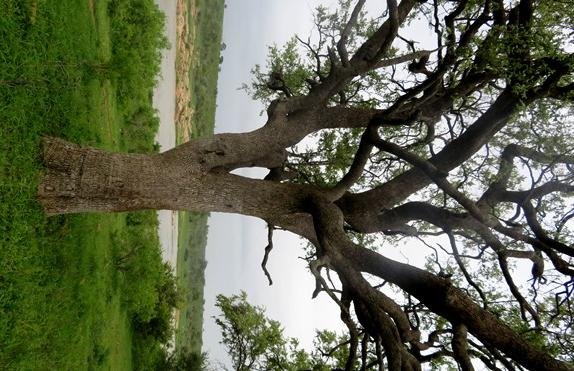Combretum imberbe bole and lower parts

Author: Ivan Lätti
Photographer: Ivan Lätti
The ample base of a thriving Combretum imberbe tree might suggest a lush and dense crown. But no, even the largest leadwood trees sport wand-like upper branches, often with dead branches present somewhere in the see-through crown.
The foliage is sparse. The narrow leaves are wavy, a greyish yellow tinge present on the leaves whenever they are there. For in winter it is bare branches only on these deciduous trees.
Leadwoods take their time to grow and get old, their wood hard and close-grained. The wood is not easy to use as timber, apart from serving as railway sleepers or mine props. The upper, thinner branches are good as fence posts.
In the northwest of Namibia young girls weave the thin branches that are young and flexible into belts to wear.
Ungulates like giraffe, kudu and impala, as well as elephants browse the leaves. Elephants are sometimes classified as paenungulates or almost ungulates and recognised with hyraxes and some other animals as evolutionary intermediate between those with hooves and claw-like nails. Others do consider elephants to be ungulates (Schmidt, et al, 2002; Mannheimer and Curtis, (Eds.), 2009; Grant and Thomas, 2001; Wikipedia).

